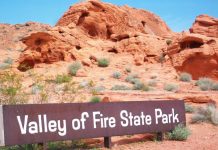Mount Katmai has long been recognized for its caldera collapse. Mount Katmai rises at the head of the Valley of Ten Thousand Smokes on the upper Alaska Peninsula, along the volcanic front of the Aleutian arc. This sizable compound stratovolcano was made up of two adjacent cones that were both severed during the 1912 caldera collapse.
Still, many people don’t even hear its name. Mount Katmai is 6.3 miles in diameter with a central lake-filled caldera about 3 by 2 mm in area. Mount Katmai was formed during the massive Novarupta eruption in 1912. The sound of the explosion would be heard in Atlanta and St. Louis, and the fumes were observed as far away as Denver, San Antonio, and Jamaica.” (Robert F. Griggs, National Geographic Magazine, 1917, v. 81, no. 1, p. 50)
In June 1912, the most spectacular Alaskan eruption in recorded history and the 20th century’s largest measured volcanic eruption formed a large summit caldera at Katmai volcano. The volcano has caused ten known fatalities due to gas exposure. The caldera’s rim reaches a maximum elevation of 6,716 feet. In 1975, the surface of Crater Lake was at an elevation of about 4,220 feet.
The estimated elevation of the caldera floor is about 3,400 feet. The flows were still hot enough to release gases and boil water, and they would be until the 1980s. Katmai is centered on the regional drainage divide, and the edifice is amazingly asymmetrical. It was one of the largest eruptions in the 20th century, ejecting almost 30 cubic kilometers of ash and debris into the atmosphere. It is well above 1991 Pinatubo by a factor of 3 in volume and, for comparison, 1980 Mt. St. Helens by a factor of 30.

The magnitude of the eruption can perhaps be best realized if one could imagine a similar outburst centered in New York City. All of Greater New York would be buried under ten to fifteen feet of ash. Philadelphia would be completely dark for sixty hours and coated with a foot of gray ash. And Washington and Buffalo would receive a quarter of an inch of ash, with a shorter period of darkness.
The mountain is located in Kodiak Island Borough, adjacent to its border with Lake and Peninsula Borough. The massive eruption happened at a vent about 10 kilometers to the west of Mount Katmai. For more than 60 hours, the volcano eruption took place with 28 km2 of ash flows and tephra representing 13 km2 of magma volume. Mount Katmai consists mainly of lava flows, pyroclastic rocks, and non-welded to agglutinated air falls.
However, very little is known about the historical activity of the Katmai volcano before the 1912 eruption. The Quaternary volcanic rocks at Mount Katmai and nearby cones are less than 5,000 feet thick. Much of the volcano is mantled by snow and ice, as some valley glaciers radiate out from the flanks.
The gigantic eruption produced a cloud of suffocating gas and ash that blackened the sky for the inhabitants of the town of Kodiak. The ash falling on them quickly led them to the harbor, where they were evacuated by boat.
In 1919, geologists noted a lake covering a large part of the caldera floor. However, at the end of 1923, the lake was gone, and many fumaroles, mud pots, and a large mud geyser had replaced it. Please keep in mind that Mount Katmai should not be climbed without mountaineering skills and equipment.
High winds, regular rain and drizzle, brown bears, icy stream crossings, crevassed glaciers, and particularly its remoteness, make the area a true wilderness. But it’s exhilarating and risky, occasionally wonderful, rarely comfortable, and never to be trifled with.
The withdrawal of magma beneath Katmai resulted in the collapse of the summit area, forming the caldera. After the subsidence, a small dacitic lava dome recognized as “Horseshoe Island” was emplaced on the floor of the caldera. That is the only juvenile material that erupted from the Katmai caldera during the historical eruption. It was visible at the time of the expedition in 1916.
From then on, Crater Lake has been engulfed in it. Still, the eruption from Katmai had a VEI of 3, and possibly involved phreatic eruptions. The nearby Trident, Griggs, and Snowy Mountain volcanoes became active long before Mount Katmai, and activity at Mageik volcano began about the same time as at Katmai.









